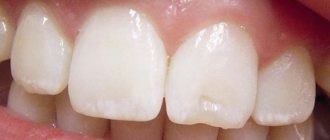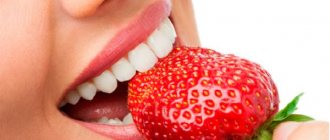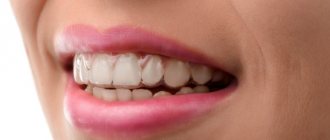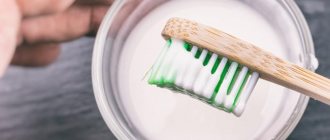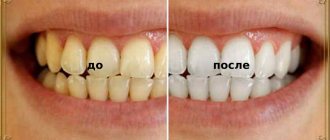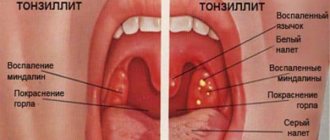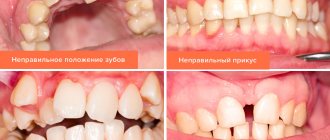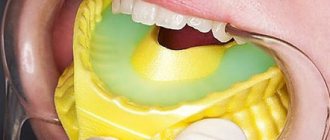Powdered milk
– powder (see photo), which is obtained by drying cow's milk. It was invented so that people could take this product with them on long trips and be able to enjoy it at any time, which is why it received a lot of positive reviews. This product has a caramel flavor.
The production of milk powder takes place in 2 stages: first, the milk is condensed and then dried. As a result, the product loses 85% of its volume. It is packaged in packages using inert gases, which ensures a longer shelf life.
Powdered milk contains a large amount of fat. Considering this, it is used in the recipe for making chocolate, as well as for making some candies. In general, this product is quite widely used in the food industry, as it is included in cereals, baby food, confectionery, condensed milk, yogurt, etc.
Selection and storage
When choosing powdered milk, pay attention to its composition: it should not contain vegetable fats or any preservatives, only whole cow's milk. The packaging must be intact and without damage.
Powdered milk has a long shelf life - 8 months from the date of production. Ideal storage conditions would be a temperature from 0 to 10 degrees, while the air humidity should be no more than 85%. If the product is low-fat, the shelf life increases to 3 years.
How to check the quality?
To check the quality of purchased milk, you need to taste it. If you feel any aftertaste or the taste does not resemble milk at all, it means that low-quality raw materials were used during the production of milk powder. Also, the taste of this product may be affected by improper transportation and storage conditions.
The quality of milk powder can be judged by the color of the product. The powder should be uniformly white with a slight creamy tint.
The presence of yellow or brown inclusions indicates that errors were made during the manufacture of the product, which will significantly affect its quality.
Powdered milk should have a uniform consistency without any lumps
, and if they are, then it’s very easy to crush them with your fingers.
A high-quality product should dissolve completely in water, leaving no sediment.
If you did find it, it means that the raw materials were of poor quality.
Beneficial features
The benefits of powdered milk are due to its composition, which is not inferior to natural milk that has undergone pasteurization. This product contains calcium, which is necessary to strengthen bone tissue. Powdered milk also contains potassium, which has a beneficial effect on the activity of the cardiovascular system. It contains quite a lot of vitamin A, which improves visual acuity and skin condition. Given the vitamin D content, milk powder is an anti-rickets agent.
This product contains choline, which helps normalize cholesterol levels in the blood. Thanks to chlorine, you can get rid of swelling and cleanse the body.
Use in cooking
Powdered milk is used to reconstitute milk or a milk drink, which can then be used like natural milk. In addition, creams, baked goods and other products are prepared on its basis. As mentioned earlier, it is widely used in recipes for many confectionery products.
How to properly dilute?
To restore milk powder, you need to take warm water, approximately 45 degrees. It should be diluted in a ratio of one to three. The liquid should be introduced gradually, while stirring thoroughly. Then the prepared drink must be left for a while to allow the whites to swell.
Harm of powdered milk and contraindications
Powdered milk can be harmful to people with individual intolerance to the product. Avoid using this product if you have difficulty digesting dairy products.
Regular whole milk turns sour very quickly. For this reason, an excellent alternative was invented - milk powder, which has the same beneficial properties.
Benefits of milk powder
Many people think about the usefulness of powdered milk when they see it in various products. However, research confirms that whole milk and milk reconstituted from powder have virtually no differences. Milk powder will be beneficial if it is made from good cow's milk. To obtain such a product, whole milk is first condensed and then dried. The result is a milk powder that has a longer shelf life than fresh milk. But the natural product still has greater nutritional value because it contains more proteins, carbohydrates and vitamins. They are almost equal in cholesterol content. Powdered milk does not need to be boiled, because it has already been subjected to heat treatment during the preparation process.
- Milk powder contains a large amount of vitamin B12, which makes it very useful for anemia. 100 grams of reconstituted milk contains the daily dose of this vitamin.
- This product strengthens teeth and bones and prevents osteoporosis.
- Powdered milk is often used to combat lung infections, since the necessary immunoglobulins are formed from protein foods.
- Milk powder reduces headaches.
- The product is soothing and excellent against insomnia.
- Athletes use reconstituted milk to build muscles, using special products based on it, and mothers feed their babies with milk formulas that contain this product.
- Powdered milk is better absorbed by the body than whole milk, normalizes stomach acidity, and eliminates heartburn.
- The low-fat product helps in the fight against excess weight.
- Powdered milk is often included in healing baths, nourishing and cleansing masks and other products for hair, skin and nails.
- The product is good for blood vessels and the heart, improves vision, prevents the formation of wrinkles, aging, and has an antirachitic effect.
- Vegetarians especially need the vitamins contained in milk.
Powdered milk is an excellent replacement for fresh product. After all, it saturates the body with useful elements and energy and is perfectly absorbed. Reconstituted milk can be consumed by patients with diabetes and gastroenterological diseases.
How to Have White Teeth – Natural Remedies
Today there are many ways to keep your teeth white . Often due to poor diet, excessive coffee consumption, smoking cigarettes or poor oral hygiene, teeth turn yellow and develop a patina that hides the natural white color of the enamel.
In order to have healthy, white and shiny teeth, you can resort to natural whitening remedies that are less harmful and equally effective:
- Home remedies, that is, products that return the bright white color of teeth enamel.
- Herbal Remedies - The use of certain herbs, such as fresh sage leaves, rubbed on the teeth releases active ingredients with a whitening effect.
- Other natural remedies such as green clay powder, which can be purchased at the pharmacy.
The following products can help with daily oral hygiene, but it is also important to maintain healthy habits:
- Brush your teeth after every meal or at least three times a day with a brush with a small amount of toothpaste from top to bottom on all sides of the teeth to remove, in addition to food debris, plaque and tartar.
- Use bleaches, even natural ones, with caution and for short periods. Because frequent and excessive teeth whitening procedures can make teeth hypersensitive and destroy tooth enamel.
- Use dental floss to remove food debris that is trapped between teeth where a toothbrush cannot reach, otherwise it can lead to tartar formation and bacterial growth.
- Avoid drinks that contain caffeine and all cola-based carbonated drinks, as excessive consumption leads to staining of teeth.
- Avoid smoking in any form, as the combustion of the tar and nicotine contained in tobacco causes dark and unsightly stains on the teeth.
- Visit your dentist at least once a year for a teeth cleaning, and preferably once every six months.
Harm and contraindications of milk powder
Powdered milk, with such benefits, like any product, also has harm. If the cows whose milk will be processed into powder fed in environmentally unsafe areas, then their milk may contain toxic substances, and when the fresh product is processed into powdered milk, their concentration will increase.
Only improper storage can deteriorate the taste of milk powder; it cannot be kept at high humidity and temperature. The disadvantage of this product is its high fat content. Excessive consumption may result in accumulation of excess fat and disruption of the metabolic process. Reconstituted milk can be harmful if consumed in the morning after exercise or before bed because the casein it contains takes several hours to process.
To prevent milk from dry powder from being very fatty, it is important to correctly calculate the proportion when diluting it. Otherwise, cholesterol can lead to heart and vascular diseases.
Powdered milk, like whole milk, is contraindicated for people with lactose intolerance, since their bodies do not have the enzyme that breaks down lactose. Milk is also contraindicated for those who suffer from allergies to this product.
After drinking fresh milk, many experience bloating, diarrhea and other negative consequences, but a dry product can minimize this effect.
The harm from consuming milk powder is insignificant, but you should not get carried away with it.
Bleaching using the “miner’s” method – charcoal!
For such bleaching, you do not need to go underground or master the profession of a miner. Everything is much simpler. Buy activated carbon at any pharmacy and get started. The method is not only cheap, but also without harm. After all, coal is a sorbent, so even if it gets into the stomach, it will do no harm.
The instructions look like this:
- Grind one tablet into powder;
- Apply the black mixture to a damp brush;
- Brush your teeth for about five minutes;
- Rinse your mouth well.
This procedure removes most stains and makes teeth shiny. And although you won’t see much result, it won’t cause any harm. If you whiten with charcoal at least once every week and a half, then after a month your teeth will become a little lighter. You can also use wood ash, which in the old days was an analogue of toothpaste.
Composition of milk powder
Reconstituted milk contains many vitamins and minerals. However, some of the vitamins disintegrate during the production of the powder because the milk is exposed to high temperatures. Mineral elements are retained in the same quantity during this treatment. Powdered milk is rich in vitamins - PP, C, B2, choline, as well as minerals - potassium, phosphorus, calcium, magnesium and sodium.
Per 100 g of product there are:
- proteins – 24.12 g;
- fats – 25.05 g;
- carbohydrates – 40.01 g;
- ash – 7.48 g;
- water – 3.44 g;
- mono- and disaccharides – 38.1 g;
- organic acids – 1.06 g;
- polyunsaturated fatty acids – 15.06 g;
- cholesterol – 0.099 g;
- calorie content – 469 kcal.
| Vitamins | mg/100 g | Minerals | µg/100 g |
| Kholin | 24,3 | strontium | 18,2 |
| RR | 4,81 | tin | 14,01 |
| N | 0,0036 | aluminum | 51,8 |
| E | 0,0091 | cobalt | 0,253 |
| D | 0,0085 | molybdenum | 0,79 |
| WITH | 6,037 | fluorine | 5,5 |
| AT 12 | 0,0053 | chromium | 21,12 |
| AT 9 | 0,0062 | selenium | 2,34 |
| AT 6 | 0,007 | manganese | 6,4 |
| AT 5 | 0,35 | copper | 14,08 |
| AT 2 | 1,19 | iodine | 10,09 |
| IN 1 | 0,27 | zinc | 3903 |
| A (RE) | 0,064 | iron | 6507 |
| R (RR) | 1,05 | sulfur | 30420 |
| A (A) | 0,082 | chlorine | 112500 |
| phosphorus | 801023 | ||
| potassium | 1430000 | ||
| sodium | 450340 | ||
| magnesium | 122006 | ||
| calcium | 1010505 |
Reconstituted milk contains 12 important amino acids that are involved in protein biosynthesis. Minerals provide support for all systems of the human body.
How to dilute milk powder
To dilute milk powder, you need to heat clean water to a temperature of 50–70 degrees. Mix the powder with water in the following proportion: for 1 part powder, take 3 parts water.
Those who suffer from gastrointestinal diseases are recommended to consume the reconstituted product in its pure form, without drinking it with food. You can start or end your day with a glass of hot milk. Other people can combine it with any products, add it to or prepare porridge based on it.
This product is effectively used in cooking, cosmetology, and in the preparation of baby food. High-quality milk powder is an excellent alternative to fresh cow's milk.
Milk powder is a soluble powder obtained by drying normalized pasteurized cow's milk. The production of milk powder is due to the longer shelf life of this product compared to regular milk. There is also instant milk powder. It is usually diluted in warm water and consumed as a regular drink, retaining many of the beneficial properties of fresh pasteurized milk. It is widely used in cooking. Included in many types of infant formula.
Powdered milk production
Probably not each of us knows how powdered milk is made. This product first became known back in 1832, when the Russian chemist M. Dirchov founded the first production of milk powder. Real milk powder must be made from natural cow milk. The process consists of several stages. First, the milk is normalized to the desired fat content, pasteurized and condensed in high-pressure machines. Next, the resulting mixture is homogenized and dried in special devices at temperatures of 150-180 degrees. As a result, a white powder remains - this is powdered milk, or rather its dry residue, which has lost 85% of its volume (water). The only advantage of such a product over whole milk is the possibility of its long-term storage. Plus, it takes up little space, which is very important when transporting. The composition of powdered milk is the same as that of whole milk, it just does not contain water. Powdered milk is produced in accordance with GOST 4495-87 “Whole milk powder” and GOST R 52791-2007 “Canned milk. Powdered milk. Technical conditions".
Composition of milk powder
Powdered milk can be whole (WCM) or skimmed (SOM). These two types of milk powder differ in the percentage of substances they contain.
Whole milk:
Fats (%) - 25 Proteins (%) - 25.5 Milk sugar (%) - 36.5 Minerals (%) - 9 Moisture (%) - 4
Skimmed milk:
Fats (%) - 1 Proteins (%) - 36 Milk sugar (%) - 52 Minerals (%) - 6 Moisture (%) - 5 Calories per 100 g - 1567 kJ (373 kcal)
The shelf life of whole milk powder is less than that of skim milk, since fats are susceptible to spoilage - rancidity. It should be stored at a temperature of 0 to 10 °C and a relative humidity of no higher than 85% for up to 8 months from the date of production. Instant milk powder is made by mixing whole and skim milk powder. The mixture is moistened with steam, after which it sticks together into lumps, which are then dried again.
When properly prepared, the composition of milk powder retains most of the vitamins and almost all mineral components. 100 grams of it contain (in brackets - content in fresh milk):
- vitamin A in the amount of 0.013 mg (0.02 mg) - vitamin B1 in the amount of 0.01 mg (0.04 mg) - vitamin B2 - 0.02 mg (0.15 mg) - vitamin C - 0.4 mg (1.3 mg)
In addition, milk powder contains calcium, magnesium, phosphorus, sodium, potassium and other macroelements, which provide comprehensive support for all body systems.
If during the production of powdered milk some of the vitamins disintegrate due to the heat treatment of the raw materials, then the mineral components are not afraid of heat treatment and are preserved in the milk powder in the same quantities as in fresh milk.
It is not surprising that powdered milk can be used as a replacement for fresh milk. It is useful because it fills the body with energy, calcium and vitamins, is easily digestible and has little effect on the overall reaction of the digestive tract. Reconstituted milk can be consumed by patients with diabetes and gastroenterological diseases. In addition, vitamin B12, which is part of milk powder, is necessary for those who voluntarily refuse to eat meat. The obvious beneficial properties of powdered milk are also manifested in the fact that preparing a drink from it does not require boiling: when condensed and dried, it already undergoes pasteurization, which destroys various bacteria. The only disadvantages can be considered the ability to cause allergic reactions in those who cannot tolerate fresh milk, and a reduced amount of vitamins with a fairly high energy value. This imbalance can lead to excess weight gain. Why is milk powder harmful?
Due to drying at high temperatures, harmful oxysterols are formed in milk powder. Because of this, milk powder is banned in several countries. Homogenization is also not the most useful process, during which mixing occurs with the rotor of a dispehydrator and exposure to pressure of 5-400 atmospheres through the homogenizer. All food that is cooked under pressure is harmful to humans. And even more so under such enormous pressure. The use of high-temperature dryers, which allow the production of maximum products per unit of time, leaves practically no vitamins in the milk powder. Therefore, many people consider powdered milk to be harmful. The reputation of powdered milk as a healthy product today is also being spoiled by various counterfeits that contain soy, starch and sugar. It is no longer possible to call such a mixture milk, and in order not to purchase a low-quality product in a store, you must carefully check that the milk complies with GOST, and not technical specifications, and read the information about the composition on the product packaging.
How to use milk powder in cooking
Powdered milk has become very widespread in cooking and desserts. Added to baked goods, it provides a denser consistency of the final product, and when used in various creams and pastes, it ensures long-term storage of the finished product. Very often it is used to restore the drink. The powder can simply be mixed in the required proportions with water to obtain liquid milk, which is hardly distinguishable in taste and smell from pasteurized whole milk. When producing milk powder, roller dryers are sometimes used. During the working process, the walls of such dryers heat up, and the milk caramelizes when it comes into contact with them. This is why powdered milk often has a “candy” smell. Various baby formulas and pet food are prepared from milk powder. In some cases, this drink is more easily absorbed by the child’s body than fresh mother’s milk. Powdered milk can even be fermented to make yogurt. Also, many housewives add powdered milk to whole milk for thickness. Today, unscrupulous manufacturers often produce milk reconstituted from powder under the guise of whole pasteurized milk.
To avoid such deception, when purchasing, you must carefully read the composition of the product. It must indicate only whole cow's milk.
Powdered milk, the composition of which differs little from natural milk, is one of the main food products.
Thanks to modern technologies, the possibilities of using milk are increasing. It is a component in the preparation of various dishes.
And a product such as milk powder is popularly called mobile.
How to make your teeth more beautiful
So, let's look at a few tips that will improve the condition of your teeth if they are not at their best:
- Use floss to clean the spaces between your teeth. It is in this area that there are a large number of microbes that spoil the condition of the oral cavity. You shouldn't use toothpicks for several reasons. Firstly, they can damage the gums due to their large diameter, which happens most often. Secondly, dental floss is specially treated and coated with a layer of protective components that have antimicrobial and antiviral properties. Such additional care will help get rid of many oral diseases, as well as unpleasant odor.
- Prepare a recipe that will help whiten your teeth. To do this, apply baking soda to your toothbrush and add hydrogen peroxide. You can also use a little lemon juice. Brush your teeth with the resulting “powder” and they will shine. The result will be noticeable the first time, but this procedure only takes 3 days. Next, forget about it for six months. Only after six months can you repeat it. Otherwise, you may harm your oral cavity. And this way you will get clean, snow-white teeth, a beautiful smile, and a protective layer.
- Eat as many dairy products as possible. Enamel consists entirely of calcium, and the condition of teeth is an external manifestation of the amount of this calcium in the body. As a rule, a person lacks this element, so it must be obtained from the outside. 1 glass of milk per day for a month is enough. Your enamel will be completely renewed.
- While brushing your teeth, don't forget to brush your tongue and cheeks. 67% of people forget about this. According to statistics conducted by the dental association. Toothbrushes have a special surface that allows you to remove bacteria from these areas.
- Use the Far Eastern sea cucumber extract. This natural component has a very good effect on the entire body, including the oral cavity. It will cure oral diseases, improve the condition of teeth, and normalize metabolic processes. All this will give you a snow-white smile. You can buy an extract of Far Eastern sea cucumber on our website. Call us and we will tell you what other natural ingredients will improve the condition of your teeth.
- Eat apples and carrots. These products have a very good effect on health, especially on the oral cavity. Previously, before the arrival of toothbrushes, floss and toothpaste, people ate one green apple every morning. Every evening they ate a small fresh carrot. Eating such foods replaced the process of brushing teeth.
Using these tips, you will significantly improve the condition of your teeth. It is worth using them in everyday life, and within a few days the result will be noticeable. Next, it is only important to maintain this state; we will tell you how to do this later.
History of origin
In 1792 they first started talking about this product. One of the representatives of the Free Economic Society spoke about an unusual way of procuring milk by residents of the eastern regions: they froze it.
Frozen in ice, milk could be stored for a long time without changing its taste and beneficial properties.
In Russia, they began producing milk powder in the forties of the 19th century.
Mikhail Dirchov created the dairy industry using the technologies available at that time.
Unfortunately, history has not preserved the name of the scientist who made the unique discovery.
Production
Before the milk obtained from a cow becomes powder, it:
- Normalize by decreasing or increasing the fat content in the finished product. The thing is that the composition of milk powder assumes a stable percentage of fat content, according to GOST.
- Pasteurized to destroy pathogenic bacteria and viruses. This process requires first exposing the milk to high temperature and then cooling the milk.
- Milk is condensed by boiling. The result can be a whole or low-fat product, depending on certain technologies. Sugar is added to make condensed milk, beloved by many.
- Homogenize using chemical processes.
- Dry to remove moisture using special equipment.
Classification, composition and calorie content
If we talk about product classification, we distinguish:
- whole (WCM), it can be with a fat content of 20 or 25%;
- low fat (COM);
- instant;
- for preparing baby food.
Differences between any type of powdered milk and whole milk:
- They have different composition. To prepare an instant dairy product, COM is used; it is subjected to additional processing. As a result, due to hydrophilicity, the powder dissolves faster;
- Comprises:
- fats and proteins;
- milk sugar and minerals.
Do you know that:
Whole milk contains more fat than dry milk. But there is more protein and sugar in dry.
- Contain a large amount of:
- potassium and calcium;
- phosphorus, sodium and magnesium.
- It contains many chemical elements:
- selenium and zinc;
- copper, iron, manganese.
The finished product is enriched with vitamins C, B1, B2, B5, B6, K and A.
Note:
The energy value of low-fat milk is 373 kcal, and whole milk is 549 kcal.
Benefits and harms
The benefits or harms of powdered milk have been debated for a long time, but there is still no consensus.
Check out the summary table:
| Natural | Dry | |
| Value | Higher, more protein, vitamins, carbohydrates | More vitamin C |
| Cholesterol content | Equally | Equally |
| Benefit | Proven | Depending on the quality. Violation of manufacturing technology and the use of cheaper components reduces the benefits. |
| Harm | Only in case of intolerance | If the body does not have an enzyme that can break down lactose. |
Expert advice:
It is difficult for consumers to check the quality of milk themselves. It is better to use products from well-known manufacturers.
Application and breeding rules
For babies whose mothers cannot breastfeed, they buy ready-made formulas that include powdered milk.
They also feed domestic animals. For goats, calves, and piglets, the powder must be diluted according to the instructions on the package: add 15-20% milk per liter.
The only negative is that it is too expensive. For animals it is better to use special fortified mixtures.
Take note:
Chilled boiled water is perfect for diluting the powder and preparing the drink.
Rules for breeding milk for food purposes:
- To prepare a glass of the product, pour 5 tablespoons of powder and add a small amount of water.
- The resulting slurry needs to be mixed thoroughly. There should be no lumps in the mixture. Leave for two minutes until the mass swells.
- Add the rest of the water and after about half an hour the milk is ready for use.
Properly diluted milk has a homogeneous composition and no sediment
What can be prepared from milk powder
Powdered milk is an excellent product from which you can prepare a variety of dishes, baked goods, sweets, ice cream, etc.
Here are examples of two recipes.
- French bread recipe in a bread machine
We stock up in advance:
- dry yeast – 7g;
- premium wheat flour - 2.5 cups;
- salt – 1.5 spoons;
- powdered milk – 2.5 tablespoons;
- water – 1.5 cups;
- sugar 2.5 tablespoons;
- cow or vegetable oil - 1.5 tablespoons.
Cooking method:
Oil and water, sugar, milk, salt are poured into the container. Then flour. You need to make a hole in it and add yeast. Select the desired mode and bake the bread.
- Sweets “Homemade truffles”
If you don’t want to eat candy from the store, you can make it yourself. Take the time to cook, because there is simply nothing tastier!
For preparation use:
- powdered milk - 100 g;
- butter - 80 g;
- water – ¼ cup;
- sugar – 120 g;
- cocoa powder – 50 grams;
- cognac – 1 spoon.
You can decorate with waffles, coconut crumbs, chopped nuts - it all depends on the taste of the hostess.
Cooking steps:
- put the water with sugar and butter on the fire and boil until the sugar dissolves;
- make a mixture of cocoa and milk;
- pour out the “syrup”, add cognac, stir;
- cool, put in the cold;
- we take out the frozen mass and prepare balls from it;
- roll in prepared mixture of nuts, waffles or coconut flakes.
Yield: approximately 15 sweets with amazing taste. Invite your family for tea!
Watch the video in which experts talk about the benefits and harms of powdered milk, its production and composition:
You may also be interested
Everyone knows about the benefits of milk - both adults and children. This product is an ingredient in a huge variety of dishes and contains a lot of useful substances. According to the opinion of a large number of people, only a product that is stored for a short time can be useful, and all long-term storage packages are “solid chemicals.” According to state standards (GOST), there are several types of milk depending on the type of processing, and none of them can be called unhealthy. The same goes for powdered milk. We suggest finding out how it is prepared and what properties it has.
What is milk powder made from: composition and calorie content
We should start with the fact that milk powder is a natural product, since the powder is made from cow’s milk by condensing it and drying it in special equipment at a temperature of 150-170 degrees Celsius. Essentially, it is a milk concentrate that must be dissolved in water to give it its original appearance. It has been used since the beginning of the nineteenth century as a method of long-term storage of the drink, and today it is most popular in food production and in those regions where the supply of fresh milk in sufficient quantities is not possible. Thus, the only ingredient from which milk powder is made is natural cow's milk.
As for the calorie content of the product, it all depends on its specific type. Thus, a whole dry product has a calorie content of 550 kcal per 100 grams, and a low-fat product has approximately 370 cal. Despite its unusual shape, this milk also has a whole host of useful components in its composition:
- vitamins (A, B1, B2, B9, B12, D, C, PP, E);
- micro- and macroelements (sodium, phosphorus, calcium, potassium, magnesium, cobalt, selenium, manganese, sulfur, iodine, iron, etc.);
- essential amino acids for humans.
Types of powdered milk
The principle of preparing a powdered milk product remains the same, but depending on the specific characteristics, several varieties of such powder can be distinguished:
- Whole milk powder
is the most nutritious of all types, as it has the highest percentage of fat content. This feature also has a downside - because of this, the shelf life becomes shorter. It is this type that is most often used at home for consumption; - dry skimmed product
is whole milk that has undergone a fat removal procedure. Thus, the powder practically does not contain them, and its shelf life due to this increases to 9 months. This component can most often be found in the production of cheese, bread, confectionery, and meat industries; - the last type is instant powder
. It is prepared by mixing the two previous varieties, moistening them and drying them again. It is of great importance in the production of instant food products, in particular baby cereals and infant formula.
Why do teeth turn yellow?
Teeth become discolored, yellow or brown due to stains that develop on their surface (enamel) as well as deeper in the tooth structure. Tooth enamel is the hard white surface of your teeth.
Beneath the enamel is a light brown substance called dentin, which can become more visible as the enamel becomes thinner—a very common occurrence in adults. Dental erosion (tooth wear) leads to chronic loss of hard tooth tissue. Risk factors include aging, genetics, and consumption of foods that promote erosion and/or staining. Many of these bad habits also increase your risk of developing gum disease.
You shouldn't expect your teeth to stay white and shiny your entire life, but many of the factors that increase the rate of tooth discoloration can be avoided.
Some reasons why teeth turn yellow or brown:
- Drinking coffee or tea;
- Smoking;
- Thinning of tooth enamel due to aging;
- Poor nutrition. Consuming large amounts of processed foods that contain acids, including sugary soft drinks, candy, and sometimes some fruits. Even some additives can contribute to the thinning of enamel due to their acid content;
- Constant dry mouth (as saliva protects the enamel);
- Breathing through the mouth and blocking the nasal passages;
- Use of antibiotics;
- Excessive consumption of fluoride, especially if this habit begins in childhood;
- Genetic factors.
How to properly dilute milk powder: proportions
In order to drink powdered milk or use it as a substitute for regular milk in its absence, the powder must be returned to its original form, that is, water must be added. The classic dilution ratio is 3 to 1 (one part milk - three parts warm water). Depending on specific goals, this proportion may vary.
To get a good result from this procedure, you need to follow a number of rules and recommendations:
- Cold water cannot be used for dilution, otherwise some of the particles will simply crystallize, and this will be felt when drinking the drink;
- Too hot water, especially boiling water, should also not be used - the milk will curdle in this case;
- it is necessary to pour water into the powder, and not vice versa, otherwise it will not be possible to avoid the appearance of lumps;
- You should not use a mixer while preparing milk, as this will create unnecessary foam;
- After dilution, you need to let the liquid sit a little.
Differences between professional and home teeth whitening
Having considered all sorts of options and ways to improve the color of your teeth, many will find themselves at a crossroads. What to choose – a dental clinic or improvised means?
If funds allow, it is better to carry out the procedure under the supervision of a doctor. He will be able to assess the condition of tooth enamel, the presence of fillings or tartar, and tell you how to choose a more gentle whitening. There are three ways:
- hardware (using a light lamp);
- laser (active bleaching agents are used);
- removing plaque with the air flow system.
In addition to the fact that the procedure is expensive and slow, such home teeth whitening using abrasive products makes the enamel vulnerable and thin.
Not all home remedies for a beautiful smile are gentle on your smile. In any case, everyone chooses for themselves what is more important for them – health or beauty. Don't lose your teeth in pursuit of a sparkling smile!
Benefits and harms of using the product
Discussions regarding the replacement of regular milk with milk powder in food production are often found in the media. However, research has found that the difference between a fresh drink and one reconstituted from powder is insignificant. If we talk about the benefits of the powder product, then it is almost the same as the benefits of regular milk, since it is prepared from it, but the nutritional value due to the protein, fat and carbohydrate content of dry milk is lower. When discussing the benefits of the product, it is worth highlighting the following aspects:
- calcium is necessary to strengthen bone elements;
- potassium ensures normal functioning of the cardiovascular system;
- vitamin A has a positive effect on vision and skin condition;
- choline helps normalize blood cholesterol levels, etc.
Just like a regular, fresh drink, powdered milk can be harmful to the body if a person is lactose intolerant. In such a situation, diarrhea, bloating, abdominal pain and other symptoms cannot be ruled out. It is important to note that if we are talking about the benefits of powdered milk, then it must be of high quality, otherwise the powder may even turn out to be dangerous. Thus, harm can be caused by unscrupulous manufacturers who add not milk fat to the product, but low-quality deodorized vegetable fats, which completely deprives the drink of important fat-soluble vitamins. That is why, when choosing powdered milk, you need to carefully study the composition and give preference only to high-quality products.
Alternative folk remedies for whitening
Lemon
Its juice is often added to toothpastes because it contains high amounts of vitamin C, which helps brighten your smile.
Take a lemon drop or just the peel and rub it on your teeth. Then rinse your mouth. Some people make a paste of baking soda and lemon juice for greater effect. This mixture is used in cases where an urgent event is coming up. Otherwise, the enamel will not only lighten, but also become thinner and will react painfully to cold and hot food.
Strawberry
This berry contains a lot of malic acid, which eats away various stains. The natural color can be restored by applying the mashed pulp to the teeth. After a quarter of an hour, brush your teeth as usual. If you have fresh fruit, apply a mixture of strawberry mass and soda to the enamel every six days. The method is short-term, because only fresh berries are needed, without preservatives.
Orange
With the help of orange peel, bacteria are destroyed that parasitize the mouth and help stains appear. After this, rub the pre-crushed bay leaf powder on your teeth. After seven minutes, rinse your mouth to remove any remaining product. A cheap but effective method if used regularly at least once a week. Individual tolerance to the components should be taken into account to avoid allergic reactions.
Banana
The peel is rubbed on the teeth for about three minutes. Next is the usual rinsing. Since such a procedure does not have any pitfalls, it can be done about three times a week, preferably in the morning and before bed. Moreover, banana skin is rich in magnesium, manganese and potassium, which has a beneficial effect on tooth enamel. It is desirable that the peel is fresh. Two or three bananas in seven days is unlikely to blow your budget.
Tea tree oil
This natural antiseptic has a medium whitening effect. If you use it for six days in a row, and then every two days, the gums will stop bleeding, the microflora of the oral cavity will be restored, and plaque and tartar will stop forming. At first, an unpleasant aftertaste and numbness of the tongue may appear. Rinse your mouth thoroughly with warm water after the procedure.
Powdered milk for gaining muscle mass
Before the advent of sports nutrition and even today, when its range is very wide, powdered milk is used by athletes to gain muscle mass as a rich source of protein. As you know, bodybuilders go on special diets to build muscle, which involve predominantly protein nutrition, and therefore it is not surprising that the product in question is often found in such a diet. During active weight gain, the substance helps increase the overall calorie intake and compensate for the lack of milk protein, which also has a positive effect on endurance. The standard portion of powdered milk for an athlete is 100 grams per day, and during the period of weight gain - 2-3 times more. And although powdered milk is also often included in the composition of modern sports mixtures, some, in order to save money, prefer to use the whole dry product.
White and shiny teeth with home remedies
Below you will find a number of tips and natural remedies for teeth whitening:
- Lemon juice: has a brightening effect, so it can whiten teeth. Who it's for: Lemon juice is suitable for those with yellow teeth, although the taste is not very pleasant for many.
- How to use: Use no more than once a week, as citric acid can destroy your teeth. Can be used pure or diluted in water, or mixed with baking soda or sea salt to enhance the effect.
- Tip: Rub the lemon pulp on your teeth and then gently rub your teeth.
- Attention: lemon causes severe erosion of tooth enamel and can lead to demineralization of teeth due to its high citric acid content!
- Who it's for: Can be a good daily habit for everyone.
- For whom it is intended: for those who want to get a teeth whitening effect.
- Who it’s for: Anyone who wants a white smile without plaque.
- Who it's for: Anyone who wants to remove unsightly coffee or nicotine stains.
- Who it's for: Anyone who wants bleach and disinfectant on hand.
- Who is it for: Those who have yellow and discolored teeth to get rid of stains caused by excessive bacterial growth.
- Who it's for: Those who want to whiten their teeth.
What can you make from it at home?
Powdered milk is not only a raw material for industry that is convenient to store and transport; such an ingredient can easily get along in an ordinary kitchen, being an important component of many home recipes.
Recipe for pancakes with milk powder
To prepare pancakes or pancakes, it is not even necessary to first dilute the milk powder separately. So, to begin with, it will be enough to beat a couple of eggs, add milk powder (5 tablespoons), a pinch of salt and sugar to taste. When everything is mixed, you need to add 300 ml of warm clean water and mix thoroughly so that there are no lumps. All that remains is to add sifted wheat flour (about two glasses) and a couple of tablespoons of vegetable oil to the liquid component. At this point, the dough is completely ready for further preparation of pancakes; all that remains is to heat the frying pan and pour the resulting mixture onto it in portions.
How to make burfi sweets
Burfi is a kind of sweets based on an ancient Indian recipe. It is based on milk enriched with a large variety of spices. The candy recipe is simple, but the taste is simply unique.
So, to prepare burfi you will need 400 grams of milk powder, 200 grams of granulated sugar, 250 grams of heavy cream, nuts, vanilla sugar and butter (200 grams). The cooking process involves boiling the mass. So, first you need to melt the butter, add sugar until completely dissolved, then add cream and simmer for about 5 minutes. The mass should cool to room temperature, after which you need to add dry milk and start beating with a mixer. The resulting thick mass should be placed on the prepared pan and placed in the freezer for half an hour until everything hardens. All that remains is to cut the layer into individual candies and place a nut in each.
Roll recipe in 5 minutes
When it is necessary to quickly prepare something tasty for tea, the housewife faces a real challenge designed to demonstrate her skill. In a minimum amount of time you can prepare an excellent dessert - a roll made with powdered milk.
To create this dish you will need the following products:
- 5 tablespoons of granulated sugar;
- the same amount of flour and milk powder;
- 2 eggs;
- a pinch of salt and a third of a spoon of soda, quenched with vinegar.
The baking sheet must be placed in the oven in advance and left to heat up. Next, you can knead the dough: beat the eggs with sugar, add flour and dry milk, sifted through a sieve, and at the very end - soda. After everything is kneaded until smooth, you can pour the dough onto a hot baking sheet lined with parchment paper. The cake is baked very quickly - only 5 minutes at a temperature of 200 degrees. The finished layer is rolled into a roll with a towel and left to cool, after which it can be coated with cream. For the filling, you can use sour cream - beat 200 grams of thick sour cream and 150 grams of powdered sugar, add some fruits or berries.
Whitening strips: what effect to expect?
This option is chosen by the “lazy”. Teeth whitening strips with bleach applied to them are sold in pharmacies. They need to be glued to your teeth twice throughout the day. Duration - from five to twenty minutes. Strips are popular because anyone can follow the instructions. Plus - a delicate effect on the enamel.
You can choose one of the types to use:
- classical;
- intensive;
- for sensitive enamel.
Be sure to follow the step-by-step instructions to avoid causing itching, inflammation or pain in the mouth. The expected result will be in about fifteen days, and the procedure itself will have to be carried out regularly for at least a month.
If you want to improve the color of your enamel using whitening strips, the step-by-step process looks like this:
- We brush our teeth in the usual way;
- Take a strip and remove the protective thin film from it;
- Place the product with the gel side in front of the mirror and smooth it well so that the strip follows their shape;
- We keep the time specified in the instructions;
- Remove the whitening strip;
- We brush our teeth with a soft brush and rinse our mouth thoroughly;
- You cannot smoke, eat or talk during the procedure, because saliva can interfere with whitening;
- Most strips contain hydrogen peroxide, which may cause sensitivity;
- Home teeth whitening system, designed for 4-5 weeks, the cost is relatively low;
- Reviews indicate that the result is stable for at least three months. The interdental spaces whiten worse, but the fillings will not stand out against the general background;
- It is recommended to repeat the course using the gel.
